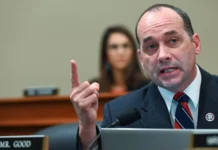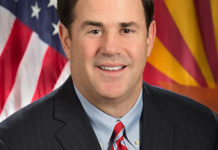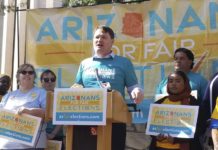
Arizona’s universal school choice program is estimated to see significant growth over the next fiscal year to 100,000 students with a price tag of $900 million. Opponents of the program say its cost will bankrupt the state, but others say the expense will be offset.
In complying with state law, the Arizona Department of Education offered the Joint Legislative Budget Committee its annual estimate on what it would need to fund empowerment scholarship accounts for the upcoming fiscal year. With nearly 58,000 students already enrolled in the program, ADE projects the program will grow to 100,000 students in fiscal year 2024 at a cost of $900 million.
Started in 2012 but recently expanded, the ESA program was the first universal school choice option in America. It allows parents to take 90% of the state funding meant for their student’s public school education and spend it on private school tuition or other approved expenses. The average scholarship amount is $10,000, according to state data.
News of the projection was met with outrage from Democrats, who called for a rollback of ESAs in the latest budget agreement.
“This runaway spending is simply another example of fiscal irresponsibility by the Republican majority at the Legislature,” said Sen. Christine Marsh, D-Phoenix. “With over 80% of the funding going to families who were already paying private school tuition, we know this sham expansion doesn’t help the students that truly need it. This is outrageous, and any Republicans who continue backing this irresponsible and unchecked growth cannot call themselves fiscally conservative.”
As of February, ADE said the ratio of ESA participants who previously attended public schools and those who left a public school is roughly equal. The students who were attending private schools would represent a taxpayer cost previously paid for by their parents.
“The school voucher program in its current form is not sustainable, and Republican legislators need to explain why they are forcing this runaway spending on Arizona taxpayers,” Gov. Katie Hobbs tweeted. “We need to bring an end to this out-of-control and unaccountable spending, and I will work tirelessly to make that happen.”
ADE officials said the $900 million cost estimate isn’t purely a net negative on the state budget.
“For budgeting purposes, it is also important to note that many of the students that are enrolling now are coming from the public school system, which in the end saves the state money because the empowerment scholarship accounts are funded at a lower percentage than the state aid for a pupil in the public school system,” ESA Executive Director Christine Accurso wrote in the letter to JLBC.
State Superintendent of Public Instruction Tom Horne said in a Wednesday informational meeting that ESAs should result in some savings because the funding follows the student from taxpayer-funded public schools. ESA costs are lower, with the exception being special needs students.
The nonprofit Common Sense Institute Arizona’s May 26 report found an estimated $639 million savings from the statewide equalization formula due to less-than-expected public school enrollment growth since the COVID-19 pandemic. That’s based on current ESA enrollment. Participants in the ESA program also come from households with incomes lower than the median Arizona family. The report found the median income of families in the ESA program as of Dec. 31, 2022, is about $60,600, while the median income of families in Arizona with at least one child is $69,700.
Republished with the permission of The Center Square.













